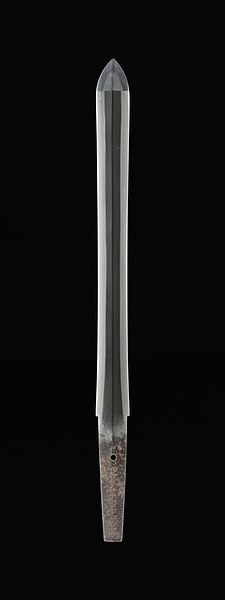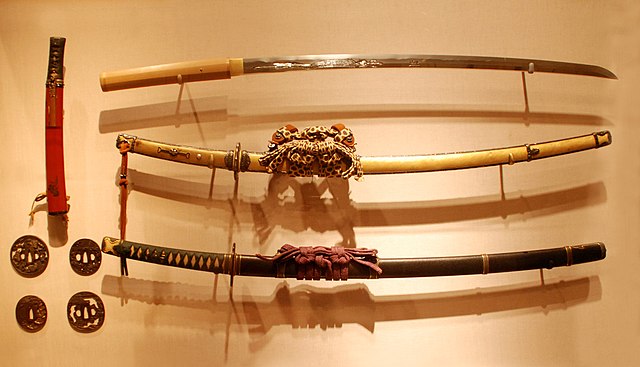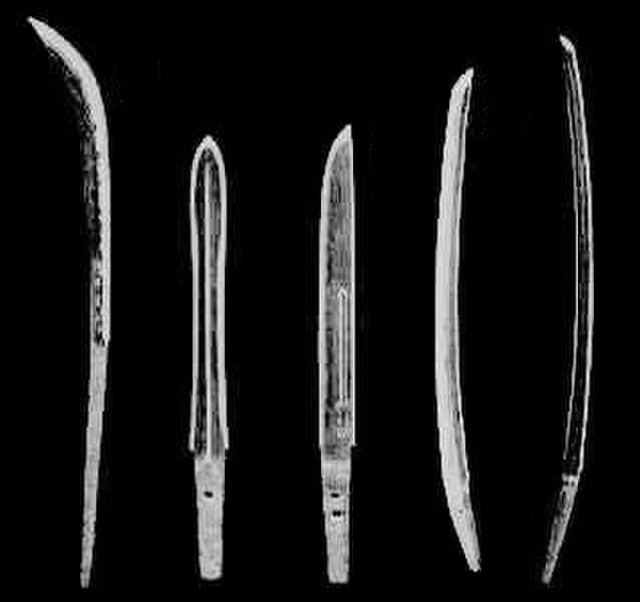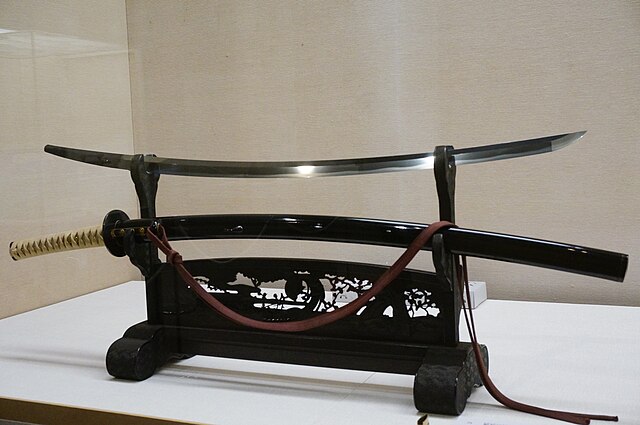A tsurugi (剣) or ken (剣) is a Japanese sword. The word is used in the West to refer to a specific type of Japanese straight, double-edged sword used in antiquity. In Japanese the term tsurugi or ken is used as a term for all sorts of international long, double-edged swords.
A tsurugi double-edged straight sword from the Kofun period (5th century)
The Tsurugi forged by Fujiwara Kunimichi in 1654 during the Edo period. It was made into an offering to Susanoo, the main enshrined kami of Yasaka Shrine.
Tsurugi forged by Fujiwara Nobutaka. 17th century, Edo period. Kyushu National Museum
An example of Fudo Myōō with a sword. 12th century, Heian period. Manshu-in, Kyoto
A Japanese sword is one of several types of traditionally made swords from Japan. Bronze swords were made as early as the Yayoi period, though most people generally refer to the curved blades made from the Heian period (794–1185) to the present day when speaking of "Japanese swords". There are many types of Japanese swords that differ by size, shape, field of application and method of manufacture. Some of the more commonly known types of Japanese swords are the uchigatana, tachi, ōdachi, wakizashi, and tantō.
Japanese swords. Two tachi with full mountings (middle and bottom right), a sword with a Shirasaya-style tsuka (top right), a wakizashi (top left), and various tsuba (bottom left).
A range of Japanese blade types, from left to right: naginata, ken, tantō, katana (uchigatana) and tachi (not to scale).
Tachi. The blade was made by Masatsune. Blade, 12th century; mounting, 18th century. Tokyo National Museum
A katana forged by Hizen Tadayoshi I. (Saijo Ō Wazamono) Azuchi–Momoyama period. (top) Katana mounting, Late Edo period. (bottom)








